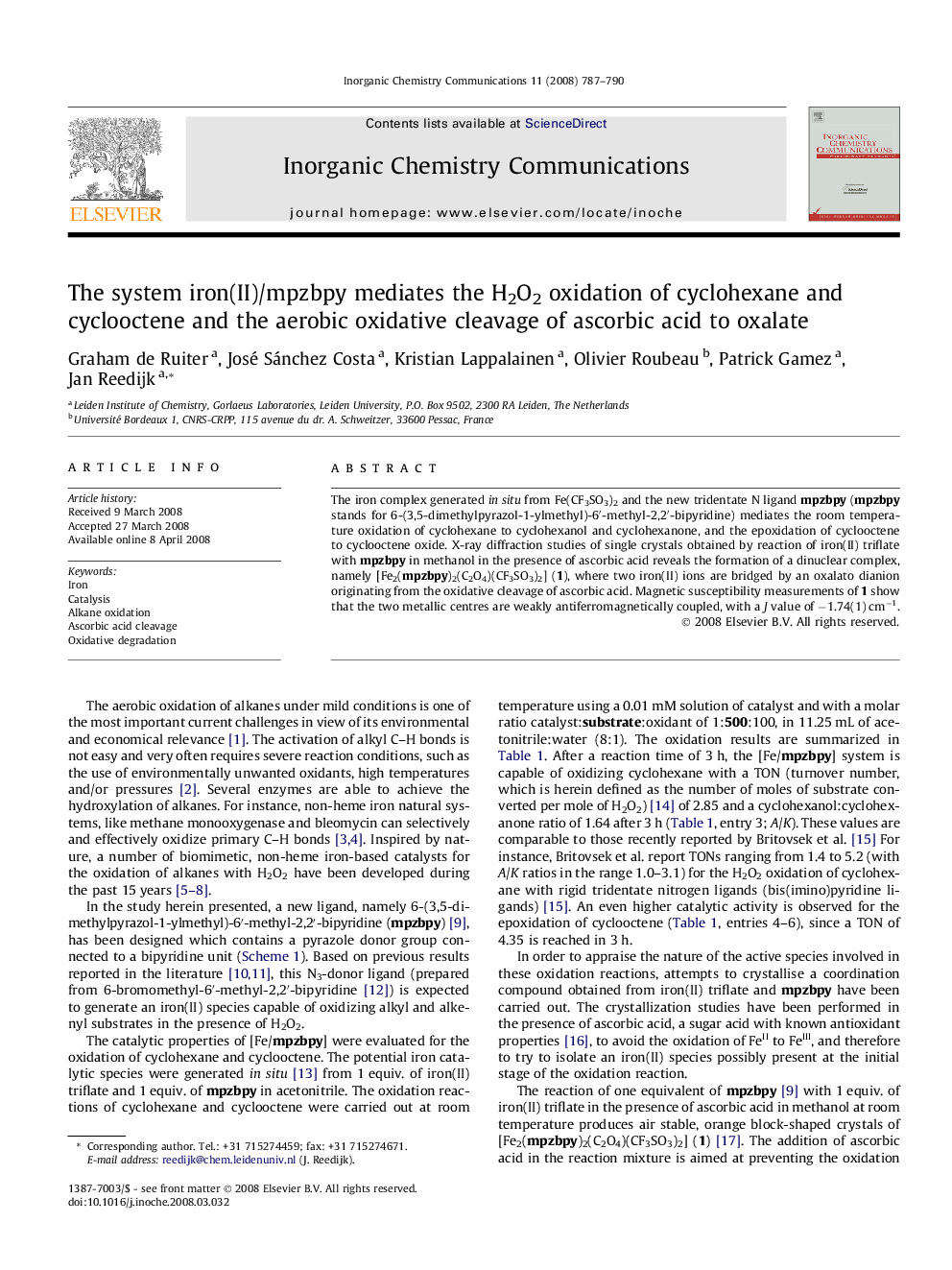| Article ID | Journal | Published Year | Pages | File Type |
|---|---|---|---|---|
| 1303247 | Inorganic Chemistry Communications | 2008 | 4 Pages |
The iron complex generated in situ from Fe(CF3SO3)2 and the new tridentate N ligand mpzbpy (mpzbpy stands for 6-(3,5-dimethylpyrazol-1-ylmethyl)-6′-methyl-2,2′-bipyridine) mediates the room temperature oxidation of cyclohexane to cyclohexanol and cyclohexanone, and the epoxidation of cyclooctene to cyclooctene oxide. X-ray diffraction studies of single crystals obtained by reaction of iron(II) triflate with mpzbpy in methanol in the presence of ascorbic acid reveals the formation of a dinuclear complex, namely [Fe2(mpzbpy)2(C2O4)(CF3SO3)2] (1), where two iron(II) ions are bridged by an oxalato dianion originating from the oxidative cleavage of ascorbic acid. Magnetic susceptibility measurements of 1 show that the two metallic centres are weakly antiferromagnetically coupled, with a J value of −1.74(1) cm−1.
Graphical abstractA new iron complex generated in situ from Fe(CF3SO3)2 and the new tridentate N ligand 6-(3,5-dimethylpyrazol-1-ylmethyl)-6′-methyl-2,2′-bipyridine mediates the room temperature oxidation of cyclohexane to cyclohexanol and cyclohexanone, and the epoxidation of cyclooctene to cyclooctene oxide. The formation of a dinuclear complex, namely [Fe2(mpzbpy)2(C2O4)(CF3SO3)2] where two iron(II) ions are bridged by an oxalato dianion originating from the oxidative cleavage of ascorbic acid has been proven.Figure optionsDownload full-size imageDownload as PowerPoint slide
